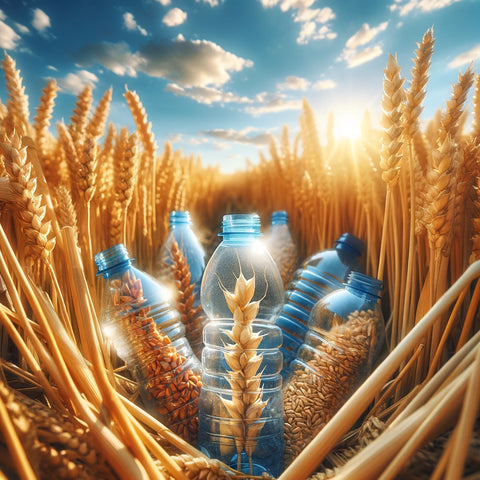In the eco-conscious world, wheat straw has emerged as a green material, but there's a crucial distinction to be made between wheat straw and wheat straw plastic. This difference is essential, especially for discerning parents and consumers seeking truly eco-friendly products.
Wheat Straw: The Natural By-Product
Wheat straw, the stalk left over after wheat grains are harvested, has found new life as an eco-friendly material. It's biodegradable, making it a sustainable choice for products like paper, packaging, and even building materials. Think of wheat straw as nature's leftover, repurposed for a second act.
Wheat Straw Plastic: The Composite Material
Wheat straw plastic, on the other hand, is a blend of wheat straw and polymers. These polymers can be traditional plastics or bioplastics. The aim is to create a material that is stronger and more durable than wheat straw alone, while reducing the amount of traditional plastic used. Imagine a hybrid car – it's not completely electric but still better than a regular gas-guzzler.
The Key Differences
1. Composition: Pure wheat straw is just the agricultural residue, whereas wheat straw plastic combines wheat straw with plastic polymers.
2. Environmental Impact: Pure wheat straw is more eco-friendly due to its full biodegradability. Wheat straw plastic, while better than traditional plastics, still poses some environmental challenges due to its plastic content.
3. Product Types: Products made from pure wheat straw are often softer and more paper-like. In contrast, wheat straw plastic is used for harder, more durable items like kitchenware and toys.
Compostability and Durability
Compostable wheat straw products are likely to be free from polymers, adhering to their natural, biodegradable nature. Harder, more durable wheat straw plastics contain polymers and are not fully biodegradable.
What Parents Should Look For
Parents seeking truly eco-friendly products should carefully read labels. Look for terms like "100% wheat straw" or "fully biodegradable" for pure wheat straw products. Be cautious of terms like "wheat straw composite" or "wheat straw blend," as these indicate the presence of polymers.
The Importance of Informed Choices
Many brands may market wheat straw plastic products as completely green, capitalizing on the lack of consumer awareness. Understanding this distinction is crucial. While wheat straw plastic is a step towards sustainability, it's not entirely free of plastic. As a consumer, being informed allows you to make choices that align more closely with your eco-friendly goals.
In conclusion, the world of eco-friendly materials is nuanced, and wheat straw is no exception. By understanding the difference between wheat straw and wheat straw plastic, consumers can make more informed choices, ensuring that the products they choose are truly aligned with their environmental values. For parents, this knowledge is vital in selecting safe, sustainable products for their families.
Mix Smarter!


